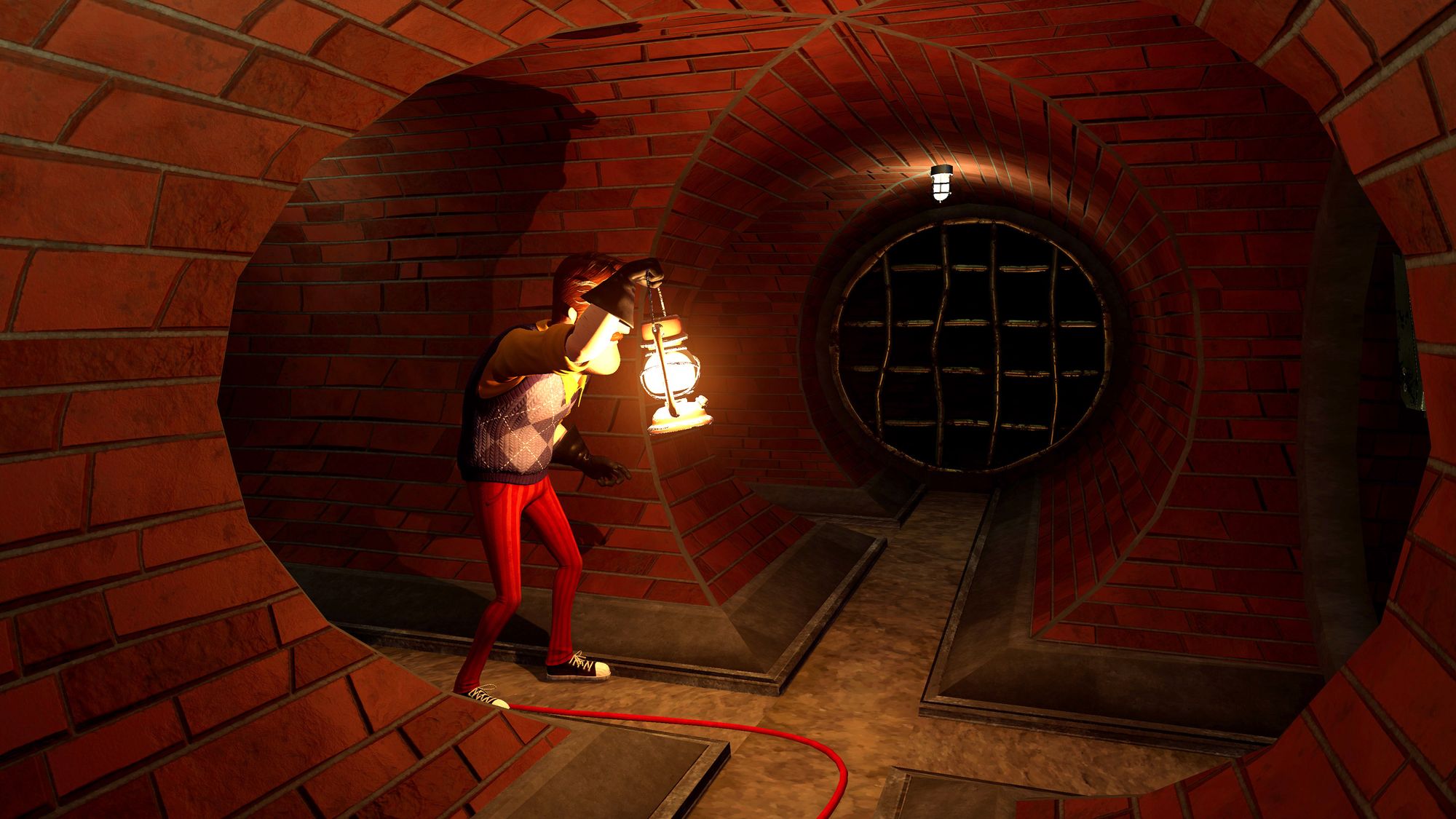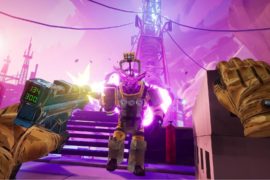Hello Neighbor: Search and Rescue brings the flatscreen franchise into VR for the first time, offering some engaging and spooky stealth survival sequences marred by slightly sketchy performance on Quest.
Available now on Quest, PC VR and PSVR 2, this VR entry in the Hello Neighbor franchise comes from Steel Wool Studios, the studio behind the popular Five Nights at Freddy’s: Help Wanted VR release from a few years back. Given Help Wanted was a huge success on Quest, it would be understandable to have high expectations for Search and Rescue, which similarly marks a first foray into VR for another hugely popular horror franchise.

Luckily it’s evident from the get go that a lot of care and passion has been poured into bringing Hello Neighbor to life in a new immersive format. While the overall release is not without problems, the world of Search and Rescue immediately pops to life with strong use of color and a well-defined cartoon art style that does a lot to establish the game’s charm early on. Exploring the game’s opening areas, I was struck by just how visually playful it felt – especially given the dreary, oppressively-dark aesthetics that normally dominate the survival stealth genre. The cute character design is cohesive with their expressive animations, which together convey the different personalities of the largely-mute cast quite well.
It’s clear that despite the creepy subject matter, the studio wants you to still feel a sense of child-like glee as you play. It’s a fantastic dichotomy that’s conveyed effectively by the move into VR. Take the game’s scale, for example, which sees you embody the shorter statures of a team of children that you’ll dynamically switch between during gameplay. These children are very clearly smaller than the world around them, with the art and environmental design leaning in to emphasize that at every turn. Your small size is never more apparent than when you come face-to-face with the creepy Mr. Peterson, who towers over you in VR. Playing as a small child in an immersive medium makes running away from him all the more terrifying.
That said, it’s also a bit jarring (and confronting) when Mr. Peterson catches up on you from behind and violently yanks your character’s perspective around to face him, often with little notice. While other games, like Resident Evil Village, have got away with taking such aggressive control over the player’s perspective, a few other disappointing elements make it feel less earned in Search and Rescue.

Interactions with objects feel finicky and sluggish, and overall performance was unreliable when playing on Quest. I experienced occasional framerate stutters, as well as many instances where I temporarily clipped through parts of the environment, reaching an unintended point-of-view. Both teleport and smooth locomotion movement is offered, but I found the former to be over-sensitive to aim and the latter would often get stuck on the environment or move unpredictably.
There was even one instance where I completely lost control of my character for at least 10 seconds, with my perspective proceeding to jerk around the environment and fly between positions several meters away from each other for seemingly no reason. The issues were never game-breaking, but tarnished an otherwise charming experience and made it feel less polished than you’d like. Likewise, while the game’s visual art style is strong, it’s marred by an abundance of jaggy edges on Quest, no matter where you look.
There were points where the game performed fairly smoothly, almost as expected, allowing more of the good stuff to shine through. Sneaking through the house and avoiding Mr Peterson is both thrilling and terrifying, working well with positional audio to help you identify where he is. Likewise, being able to dynamically switch between the game’s cast of kids at any point – by picking up the walkie talkie on your hip – offers some interesting approaches to single player co-operative puzzles, each equipped with slightly different tools.

It’s a shame that there’s no actual co-op multiplayer on offer, as being able to switch between the cast alongside another a friend could have been quite compelling in VR. Nonetheless, the approach here is different enough to other games in the genre that it feels fresh.
So far, we’ve only tried Search and Rescue on Quest, so there’s a strong chance that the game looks and performs better on PSVR 2 and PC VR, where it’s not limited by standalone hardware. If we get a chance to try the game out those platforms, we’ll let you know what it’s like.
Despite the above, it’s clear that Steel Wool Studios have approached the challenge of bringing Hello Neighbor to VR with a lot of love and passion. While it might not be quite as polished as Help Wanted’s release on Quest, it’s hard to see that stopping Hello Neighbor fanatics from jumping in anyway. For them, getting chased by Mr. Peterson in full immersive VR might just be enough to justify the price of admission. For Quest players who are more pedantic with performance, maybe it’s worth waiting to see if a patch improves the experience over time.
We’ve reached out to developer Steel Wool Studios and publish tinyBuild representatives to enquire about the performance issues and bugs we encountered with the Quest release. We’ll provide an update if we receive a response or hear about any planned improvements.





